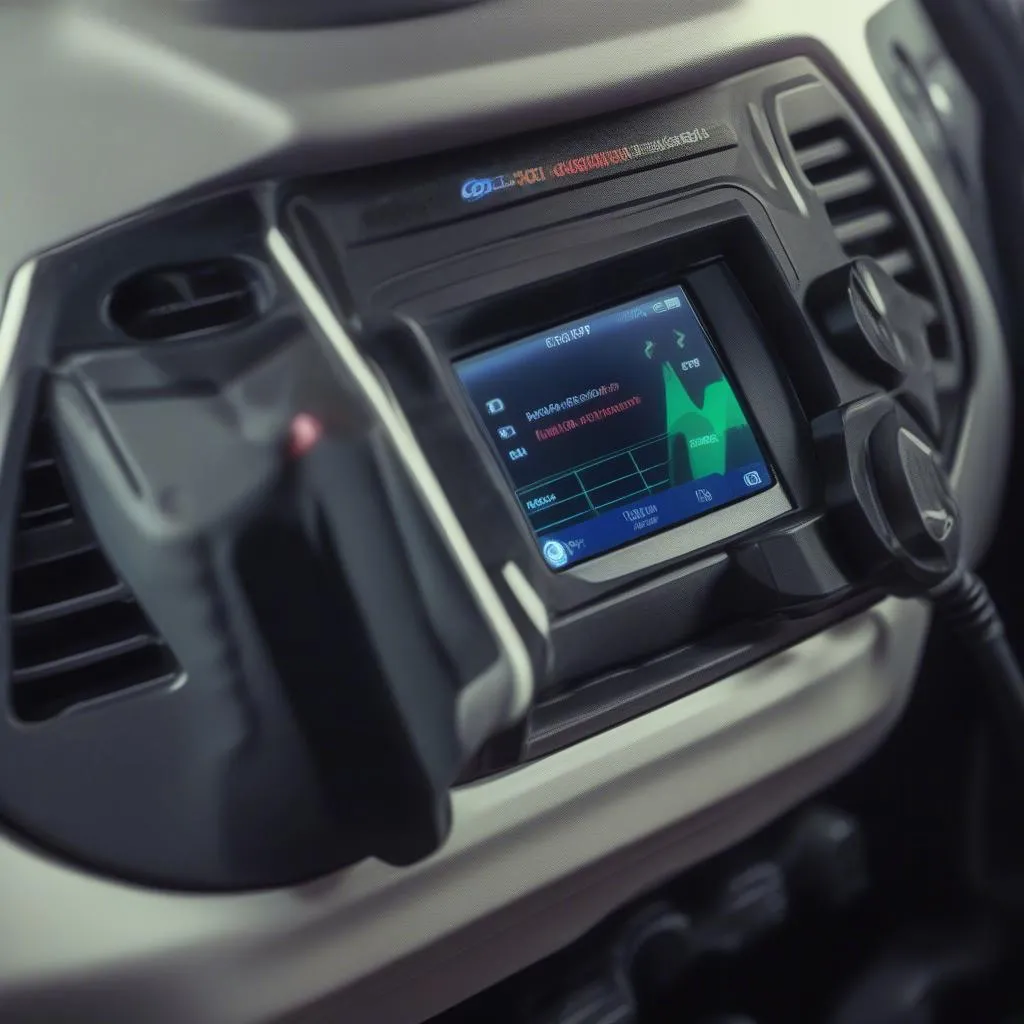Ever felt like you’re speaking a different language when trying to figure out your Ford Escape’s diagnostics? You’re not alone! Many Escape owners find themselves wondering, “Where do I even plug in this OBD scanner?” It’s like trying to find a specific restaurant in a city you’ve never been to before.
But fear not, intrepid Escape owner! This guide will walk you through everything you need to know about connecting an OBD scanner to your Ford Escape, making the process as smooth as a Sunday drive down Pacific Coast Highway.
Decoding the OBD Connection Mystery
Before we dive into the ‘how’, let’s understand the ‘why’.
From a Mechanic’s Perspective:
Think of your Escape’s OBD port as a doctor’s stethoscope. Just like a stethoscope helps a doctor listen to your heart and lungs, an OBD scanner allows mechanics (or tech-savvy owners like yourself) to “listen” to your car’s computer system. It reveals hidden error codes that indicate potential issues, saving you from costly and time-consuming guesswork.
From an Engineering Standpoint:
The OBD port is a standardized 16-pin connector, usually located under the driver’s side dashboard. It’s the gateway to your Escape’s Engine Control Unit (ECU), the brain behind your vehicle’s performance. By connecting an OBD scanner, you’re essentially plugging into this brain, accessing a wealth of information about your car’s health.
The Financial Angle:
Regularly using an OBD scanner can save you money in the long run. It helps you catch minor problems before they snowball into major (and expensive) repairs. Remember that time your “Check Engine” light came on, and you dreaded the potential mechanic’s bill? An OBD scanner could’ve given you a head start on understanding the issue.
Connecting Your OBD Scanner: A Step-by-Step Guide
Now, let’s get down to business and connect that OBD scanner!
-
Locate the OBD Port: In most Ford Escapes, you’ll find the OBD port under the driver’s side dashboard, near the steering column. It’s usually a black, trapezoidal port. If you’re having trouble finding it, refer to your owner’s manual or search online for “2013 Escape where is the OBD” – you’ll find plenty of resources.
-
Turn Off Your Ignition: Safety first! Before plugging anything in, make sure your Escape’s engine is off and the key is out of the ignition.
-
Connect the Scanner: Align the connector on your OBD scanner with the port in your Escape and push it in until you hear a click. The scanner should power on automatically.
-
Turn the Ignition to the ‘On’ Position: Don’t start the engine, just turn the key to the position where your dashboard lights up.
-
Follow the Scanner’s Instructions: Each scanner has a slightly different interface. Follow the on-screen prompts to read or clear codes, view live data, or perform other functions.
 OBD Scanner Connected to Ford Escape
OBD Scanner Connected to Ford Escape
Troubleshooting Common OBD Connection Issues
Sometimes, things don’t go as smoothly as we’d like. Here are a few common hiccups and how to overcome them:
-
Scanner Doesn’t Power On: Check the scanner’s fuse or try connecting it to a different vehicle to rule out a scanner malfunction.
-
Can’t Connect to the ECU: Ensure your ignition is in the ‘On’ position. If the problem persists, there might be an issue with the OBD port itself or a blown fuse in your Escape. You might need to consult a mechanic or refer to resources like “Ford VCM OBD” for troubleshooting tips.
-
Error Messages on the Scanner: These messages usually indicate specific problems with your Escape. Jot down the error codes and research their meaning online or consult a mechanic. Websites like “Tech Car USA” or forums dedicated to Ford Escapes can be valuable resources for deciphering these codes.
Beyond the Basics: Exploring Other OBD-Related Questions
You might be wondering about other aspects of OBD connections, such as:
-
“What is the OBD port location on other Ford models?” The location is generally similar across Ford vehicles, but it’s always a good idea to consult your owner’s manual or a reliable online resource like “OBD port location” on Tech Car USA.
-
“Can I use any OBD scanner with my Ford Escape?” While most standard OBD-II scanners will work, some advanced functions might require specialized scanners like a “Dealer Scanner for European Cars” if you own a European model.
-
“What do I do if I get an OBD code like ‘1998 Ford Expedition OBD code 455’?” Don’t panic! Research the specific code online. Websites like Tech Car USA often have articles like “1998 Ford Expedition OBD Code 455” that break down the code’s meaning and potential solutions.
 Mechanic Using OBD Scanner on Ford Escape in Garage
Mechanic Using OBD Scanner on Ford Escape in Garage
Take Control of Your Escape’s Health!
Connecting an OBD scanner to your Ford Escape might seem daunting at first, but with a little guidance, it’s a task anyone can handle. This newfound knowledge empowers you to understand your vehicle better, potentially save money on repairs, and confidently tackle any “Check Engine” light that dares to illuminate on your dashboard.
Remember, regular maintenance is key to a healthy vehicle. Just like you wouldn’t skip a doctor’s appointment, don’t neglect your Escape’s check-ups.
Need help setting up diagnostic tools or understanding those cryptic error codes? Contact us on Whatsapp at +84767531508. Our team of auto experts is available 24/7 to assist you.
We’re here to help you keep your Ford Escape running smoothly for miles to come!
Do you have any other questions about OBD scanners or your Ford Escape? Share them in the comments below! And don’t forget to check out our other articles on Tech Car USA for more car care tips and tricks.